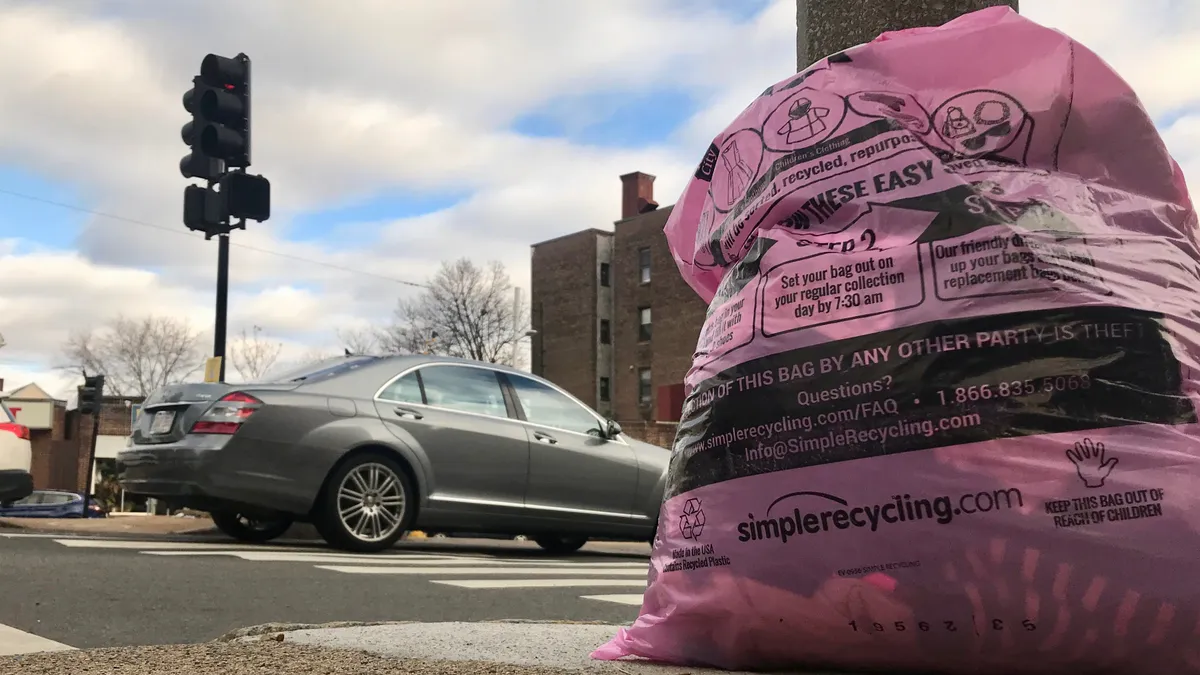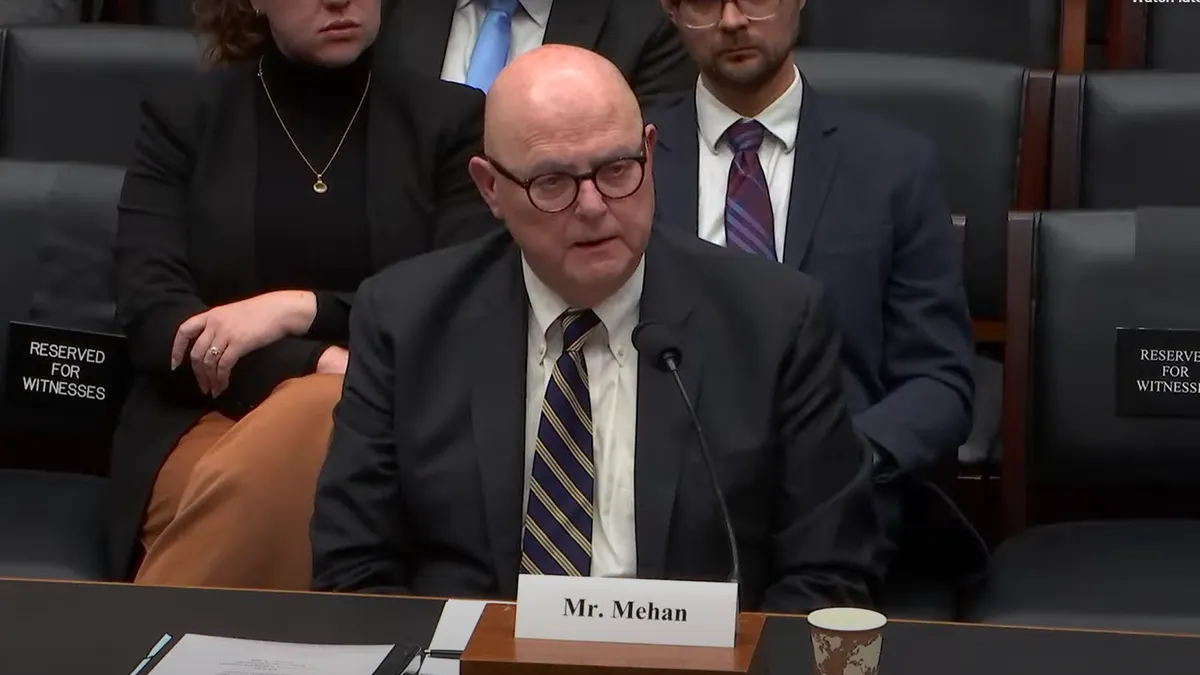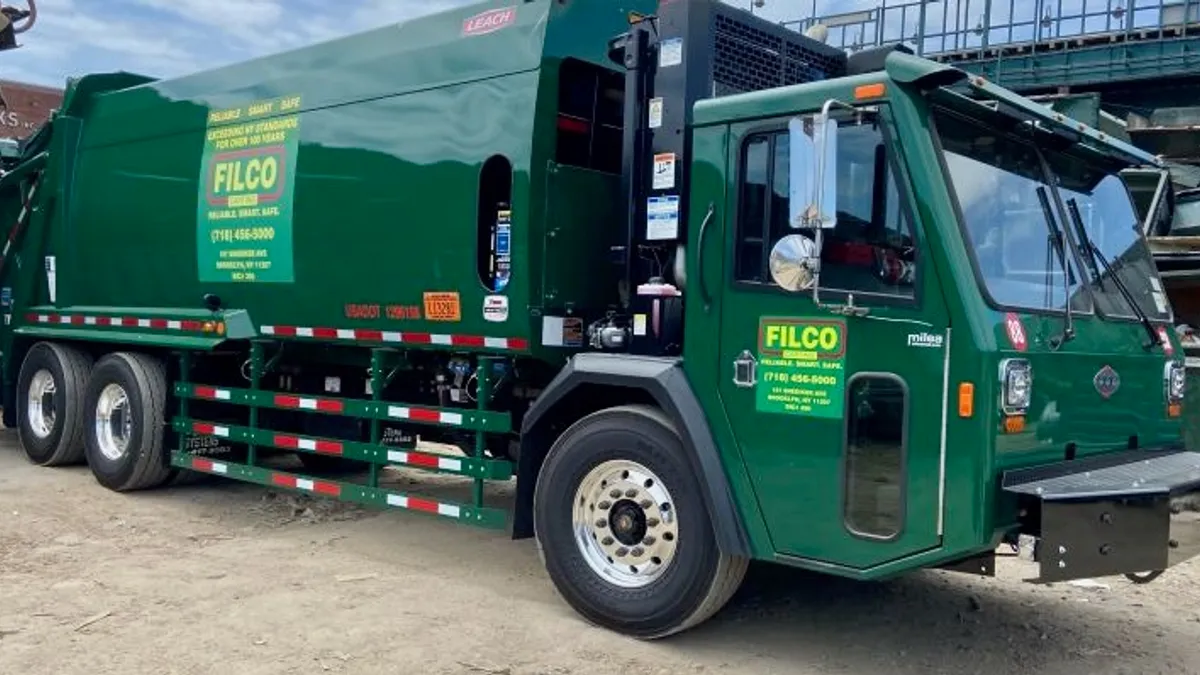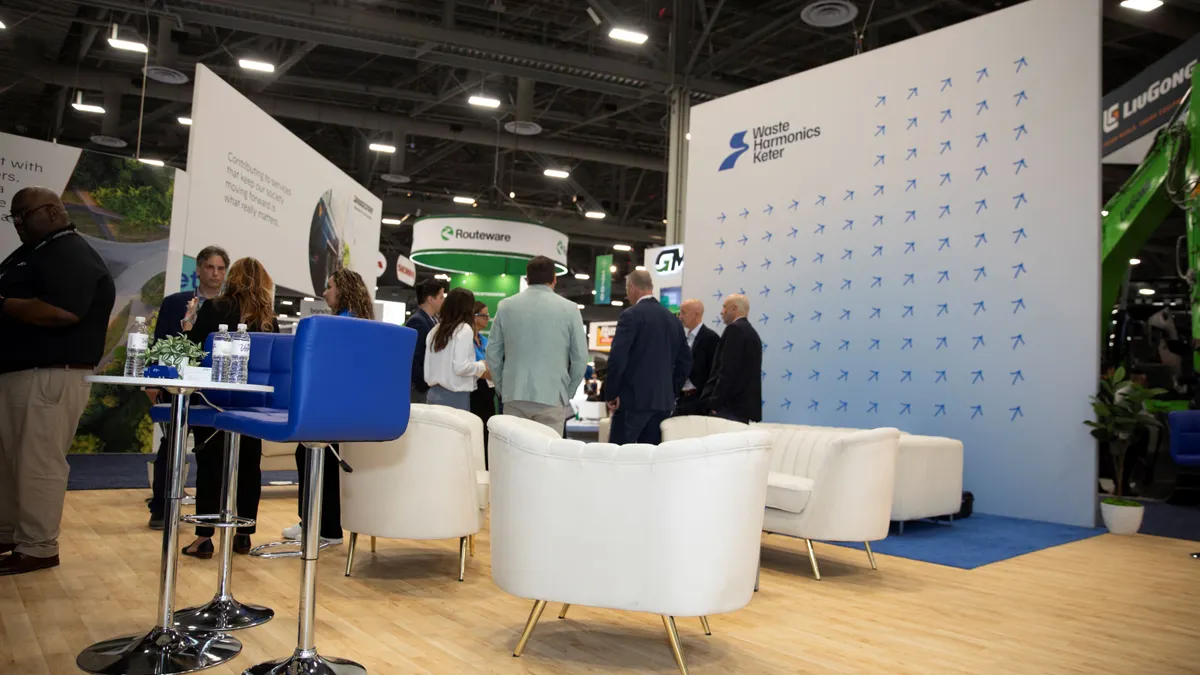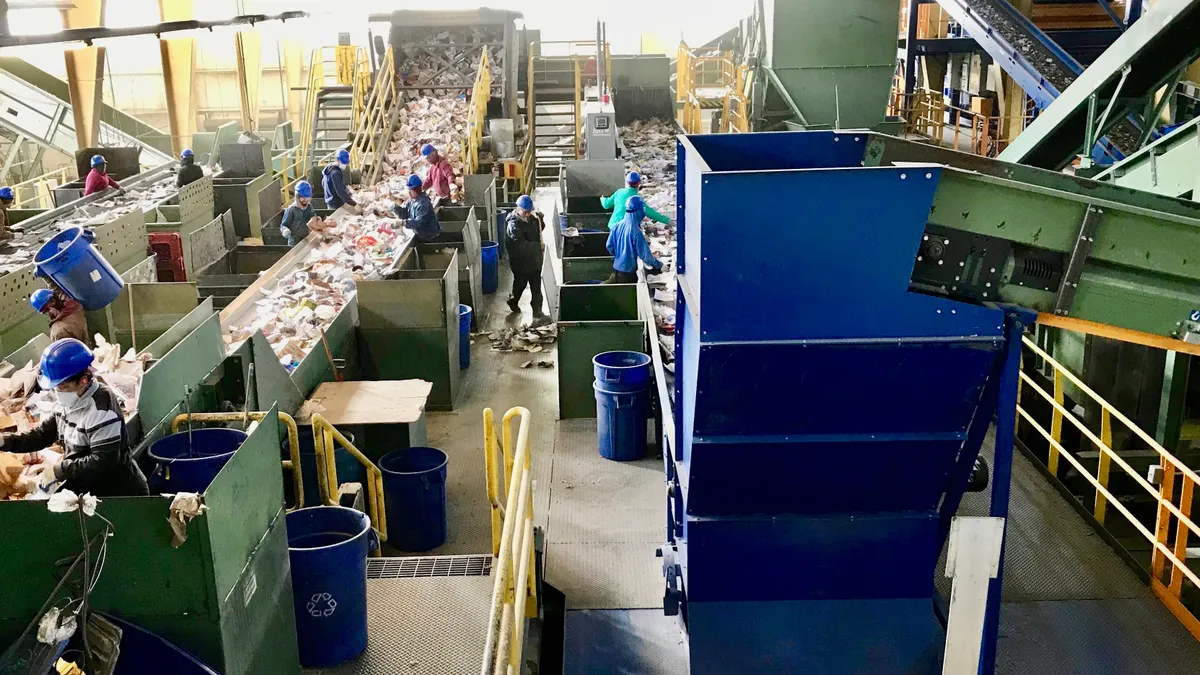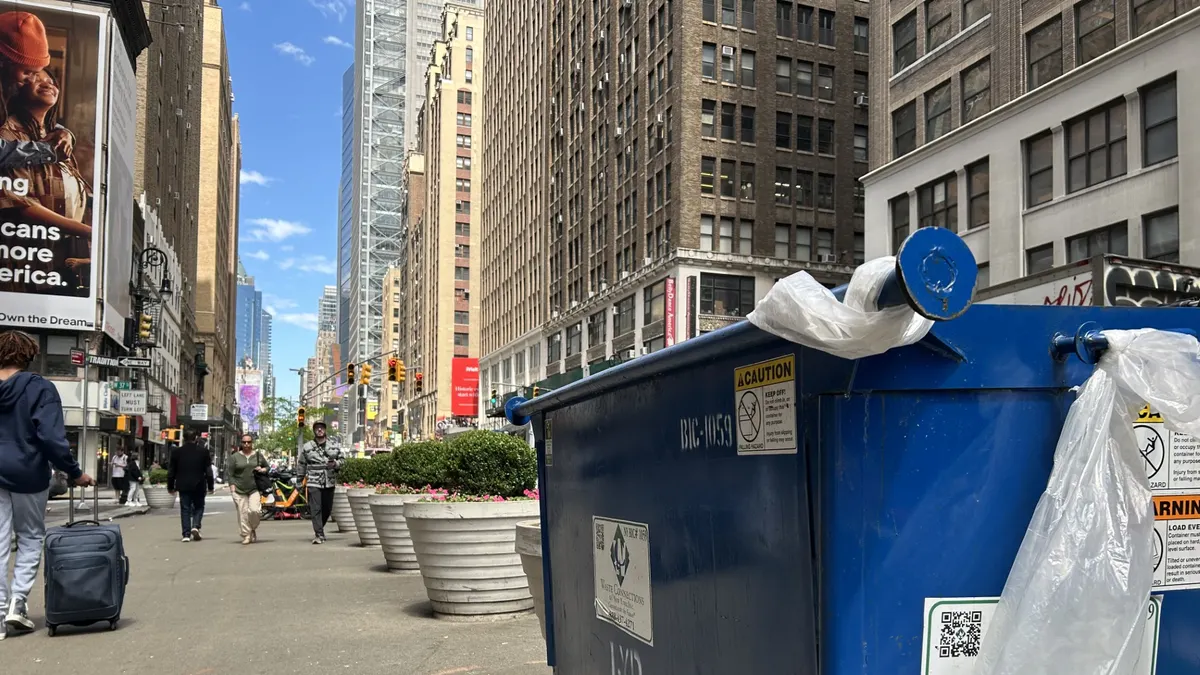Since the pandemic upended global markets for secondhand clothes, maintaining the high operational costs of curbside textile recycling has proven challenging. While programs have recently paused in multiple states, some hyperlocal providers still view curbside as a winning prospect.
Pre-pandemic, this high volume stream was increasingly viewed as one of the next frontiers for meeting "zero waste" targets and curbside collection had emerged as an attractive option.
“The whole reason the curbside thing came about was [the need to] give folks that do not donate the material an easy and convenient option to divert it,” said Sonny Wilkins, vice president of municipal relations at Simple Recycling.
Ohio-based Simple Recycling is the largest provider of curbside textile collection service in the United States. Before the coronavirus hit, the company serviced around 200 cities and towns via centralized facilities in denser urban centers, with major hubs in the Cleveland, Detroit, Houston, Boston and Dallas areas. Those services were offered free of charge, with some municipalities even rewarded on a per pound rate.
Since March, the company has suspended nearly 25% of its contracts on a temporary basis – mainly in lower density areas. Wilkins said these moves, which he hopes are temporary, were a direct result of a pandemic that has “turned our industry sort of upside down when it comes to the supply and demand situation.”
The costs of curbside
The first wave of coronavirus in the spring dealt a devastating blow to the fragile economics of secondhand clothes.
“You had a tremendous amount of upswing with the material coming in, and not nearly as much going out,” said Wilkins. “And the way that our industry works, you don't really want to hold on to the material.”
To manage the influx, the company closed three warehouses, in Stamford, Connecticut; Cincinnati, Ohio; and Raleigh, North Carolina. Wilkins predicts two more may close during COVID-19's latest wave. “We have huge impacts. There's no question.”
Simple Recycling hopes that shutting down service for the time being will help make volumes more manageable, but it’s not just large volumes that pose a problem.
Curbside collection, particularly when compared to more widespread methods of recovery like drop-off boxes, has a high overhead. This model gets tricky, because thanks to the secondhand clothing market's previously reliable values the service is typically offered to cities for free. Wilkins said the coronavirus may be jeopardizing his company's unique arrangement where residents set out special pink bags alongside their recycling carts.
“We follow the existing curbside recycling routes,” he explained. “And in that model, you don't know where that material is and you're having the labor and the trucks... So it's a very expensive way to pick up.”
The complicated logistics of curbside have led Dan Green, CEO and co-founder of New York-based Helpsy, to advocate for a hybrid approach.
“In general, curbside is much less efficient than bins or drives. It can work in addition to those modes, but should not replace them,” he said via email. “There’s every reason to think that a combination of modes (including stores that accept clothes) is the way to maximize diversion.”
Helpsy, which was slated to partner with Boston on a curbside program this year before the city postponed it due to the pandemic, is now adding new drop-off boxes across the city.
New ventures
Even in this challenging financial and operational climate, some people feel the curbside model can still work with the right model.
Rhode Island-based Curbside Textile Recycling just signed its fifth municipal contract, while Simple Recycling shut down multiple routes in the area it had serviced through a Massachusetts facility.
According to founder Melanie Flamand, Curbside Textile Recycling has also not been impervious to pandemic-induced disruptions.
“I'm not gonna lie: 2020 was tough. We were collecting products and didn't know where to put it, so we had to get what we could with trailers," she said, noting the company was not eligible for Paycheck Protection Program loans because it was less than a year old.
In the last two months, Flamand said, global markets have started reopening and the situation seems a lot more hopeful. Curbside Textile Recycling has diverted a total of 250,000 pounds from disposal so far this year. “Buyers started coming out and wanting to work with us," she said. One of her four buyers even agreed to pay for a commercial to promote collection services statewide.
Asked why she was was expanding while others are pulling back, Flamand said the answer lies in her company's operational and geographic scale. “We’re a lean company,” she said. “We’re not going nationwide. We’re not going anywhere.”
Flamand's company follows traditional recycling collection routes, while also offering free, off-route service statewide. The operation remains lucrative and Curbside Textile Recycling currently donates two cents to local charities for every pound of material it hauls. Rhode Island's small size (approximately 1,200 square miles) is a unique regional factor that makes this model possible.
“Even just in Massachusetts, if you go from Boston to Springfield, that's a whole day for one van to go around and collect," said Flamand.
Flamand and her partner have invested a great deal of their own money into the business and are optimistic it will yield returns.
“If we get a bag every other street – which is not a lot – for the five towns that we're in right now, that will be about 2.5 million pounds of clothing and shoes diverted from the landfill,” she said, noting one route in the city of Warwick has anywhere from 350 to 390 streets.
However, another small textile hauler reported a more complicated experience in its own area this year.
Adam Baruchowitz, founder of New York City-based Wearable Collections (launched in 2004), said his company's volumes have been way down. That has much to do with its collection model, built around “community hubs" like the city's Greenmarkets and schools.
“All these gigantic hubs of community have been closed down [during the pandemic], so that's crushed our business,” said Baruchowitz. The organization that runs the markets only recently resumed at three locations, whereas Wearable Collections used to manage textile drop-offs for 31.
“Luckily, we run very lean,” he said. “So we're not making a ton of money, but our operations are also pretty cost-effective.” Losses have also been buffered somewhat by the in-building drop-off bins that Wearable Collections services in apartment complexes across the city, which have remained steady throughout this period.
In an effort to diversify collection streams, the company recently added home pick-ups to its roster of services for a $20 fee. In July, it announced completing 70 home pick-ups and collecting 8,400 pounds overall (an estimated 120 pounds per stop).
“I think you have to kind of balance the hit in the market, where if people really want the service, they’re going to understand that they’re going to have to pay for it,” said Baruchowitz. “I feel very comfortable being transparent about it and saying, ‘Work with me if you want and don't work with me if you don't want. I'm here for you, but this is a hard time I’m going through.’”
Uncertain future
Meanwhile, Ohio's Simple Recycling has suspended curbside service in clusters of communities across states such as Connecticut, Michigan, Ohio, Rhode Island and Texas in recent months.
While operations remain relatively unchanged in the Northeast – its highest volume region, with a large number of contracts in Massachusetts – Wilkins said the company is keeping all options on the table.
“By Monday, you might call me, and I might have something different to tell you. That’s just how quickly these things are moving,” he said on Nov. 20.
For now, while Wilkins remains confident the shutdowns are temporary he also recognized it's hard to know when full service may return.
“We're always looking for more efficient ways to try to collect and still give people options. But as far as opening up the curbside, it may be some time," he said, expressing hope for the distribution of a vaccine and a better outlook by spring. “It's just gonna be really hard to say until things sort of get back to normal."

